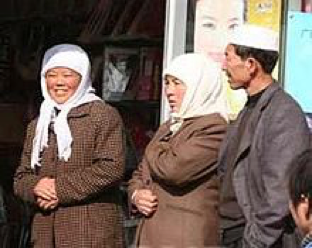The term ethnicity has to do with the study of ethnic groups and ethnic relations. But what is an ethnic group? Let’s start by making clear what it is not. It is not a biological category. Therefore, it is not possible to establish a person’s ethnicity by genetic testing. Instead, an ethnic group is one whose members share a common ancestry, or at least believe that they do, and that also share one or more other features, possibly including language, collective memory, culture, ritual, dress, and religion (Meer, 2014; Zenner, 1996). According to Meer (p. 37), the shared features may be real or imagined. Although sociologists once treated ethnic groups as if they were categories that could be objectively established, at least in principle, many scholars today see ethnicity primarily as a form of self-identification (Banton, 2015; Meer, 2014). In other words, an individual’s ethnicity is not something that can be tested for by checking off a list of defining features that serve to establish that individual’s ethnicity.
If you ask an American about his/her ethnicity, you might get a variety of different answers. Some people will emphasize their American-ness, by which they mean they do not think of themselves as belonging to any particular ethnic group. Others may point to national origins, emphasizing the fact that they are children of immigrants (or even perhaps themselves immigrants). If they identify strongly with their immigrant heritage, they might use a term, such as Italian American, Cuban American, or Mexican American. Americans of African ancestry are likely to identify (or be automatically identified by others) as African American. Americans of various Asian backgrounds, may specify that they are Chinese American, Japanese American, Korean American, etc. (although if they think they are speaking to someone that wouldn’t know the difference, they might just say, Asian American.

Many U.S. cities abound in ethnic neighborhoods. (Dragon Gate to Chinatown in San Francisco)
A common phenomenon in the United States is the presence of neighborhoods, popularly characterized as ethnic, especially in large cosmopolitan cities. Such neighborhoods result from the fact that the U.S. has historically been a country open to immigration, and immigrants are often likely to settle where their fellow countrymen have previously settled. Many American cities, for instance, have their Little Italy(s), China Towns, Korea Towns, and so on. The residents of these ethnic enclaves might be more or less integrated into the larger society depending upon such factors as how long they have lived in the U.S., or how well they speak English.
A Native American (i.e., an American Indian) might interpret an inquiry about ethnicity as a question about tribal identity. He or she might say—Ute, Shoshoni, Navaho, Lakota, etc. On the other hand, since not all of these tribal names are names that the tribes claim as their own, they may refer to themselves in their native language. For instance, the Navajo call themselves Diné. Tribal affiliations would also be salient in Africa, the Middle East and Central Asia. For instance, two major tribes in Afghanistan are the Tajiks and Pashtuns.
In China, the term minzu (民族) is used to refer to what, in English, we would call ethnic groups. Officially, the Chinese government recognizes 56 minzu. Just how the government decided on 56 as the definitive number of minzu in China, however, is an interesting story.

Hui people, third largest ethnic group in China
It may be tempting to think that people who share an ethnic identity also share a common culture. Indeed, that is what is implied in calling an ethnic group a subculture. Sometimes it is the case that people who share an ethnic identity are also culturally similar. But it is shared identity and not shared culture that makes a group ethnic. In fact, scholars specializing in ethnic studies have discovered many examples of different groups claiming a common ethnic identity but not sharing a common language, nor even common beliefs, values, customs or traditions. This shows that the connections between culture, group membership, and identity are loose at best.
It is also important to note that ethnic identification is not an irreversible decision. Sometimes people change ethnicity as easily as they might change clothes by simply deciding to no longer identify as, for example, Han 汉族 (the largest minzu in China) but to identify instead as Hui 回族 (one of the largest “national minorities” in China).




